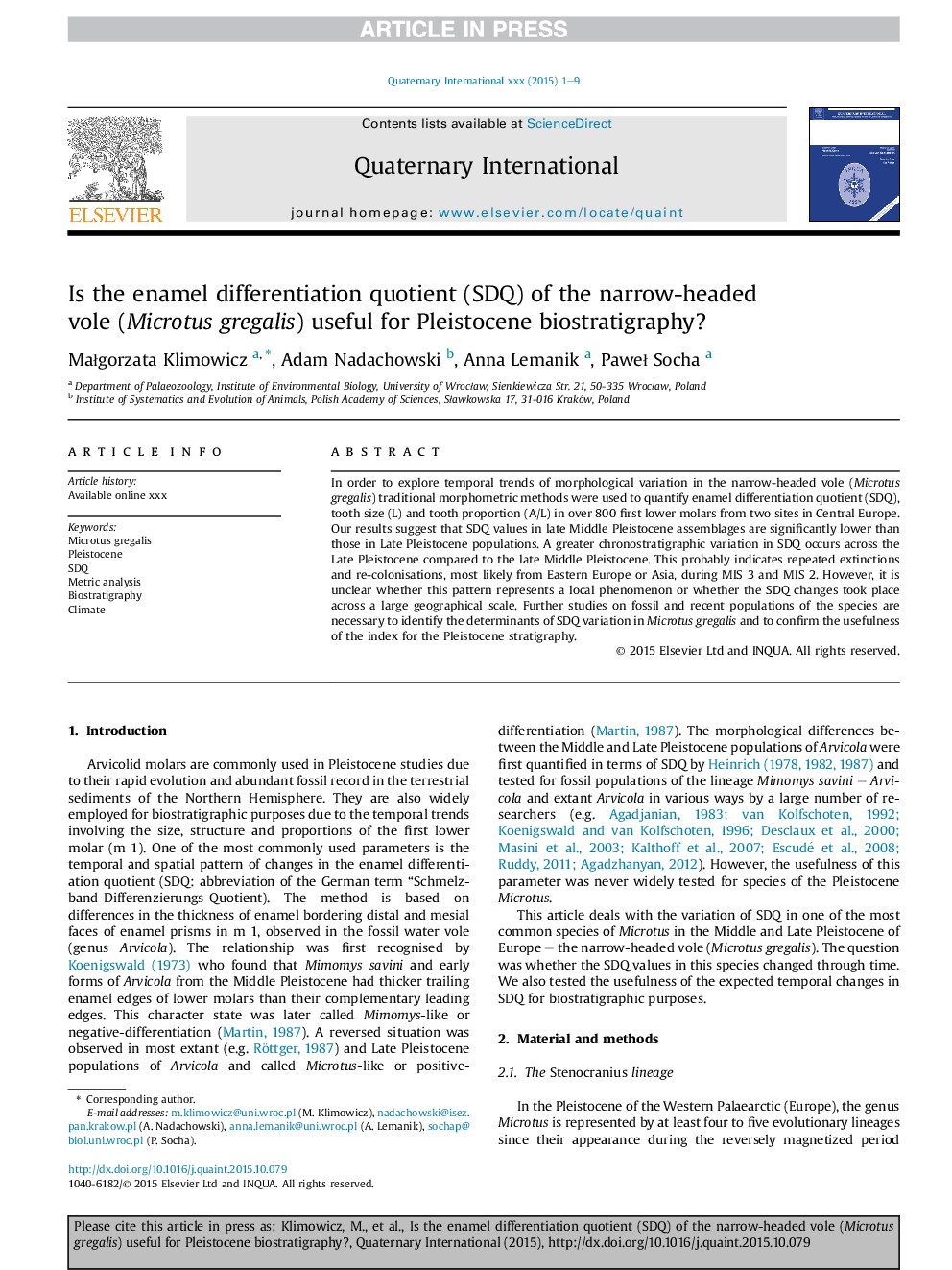| Article ID | Journal | Published Year | Pages | File Type |
|---|---|---|---|---|
| 5113975 | Quaternary International | 2016 | 9 Pages |
Abstract
In order to explore temporal trends of morphological variation in the narrow-headed vole (Microtus gregalis) traditional morphometric methods were used to quantify enamel differentiation quotient (SDQ), tooth size (L) and tooth proportion (A/L) in over 800 first lower molars from two sites in Central Europe. Our results suggest that SDQ values in late Middle Pleistocene assemblages are significantly lower than those in Late Pleistocene populations. A greater chronostratigraphic variation in SDQ occurs across the Late Pleistocene compared to the late Middle Pleistocene. This probably indicates repeated extinctions and re-colonisations, most likely from Eastern Europe or Asia, during MIS 3 and MIS 2. However, it is unclear whether this pattern represents a local phenomenon or whether the SDQ changes took place across a large geographical scale. Further studies on fossil and recent populations of the species are necessary to identify the determinants of SDQ variation in Microtus gregalis and to confirm the usefulness of the index for the Pleistocene stratigraphy.
Related Topics
Physical Sciences and Engineering
Earth and Planetary Sciences
Geology
Authors
MaÅgorzata Klimowicz, Adam Nadachowski, Anna Lemanik, PaweÅ Socha,
